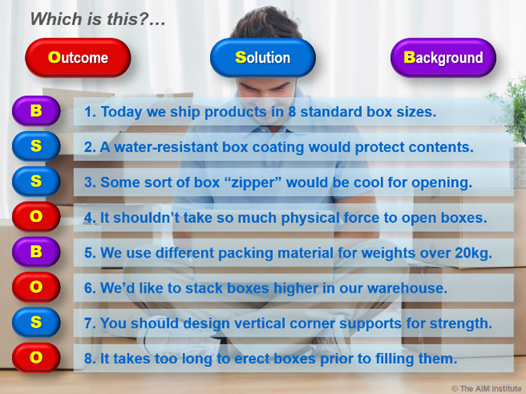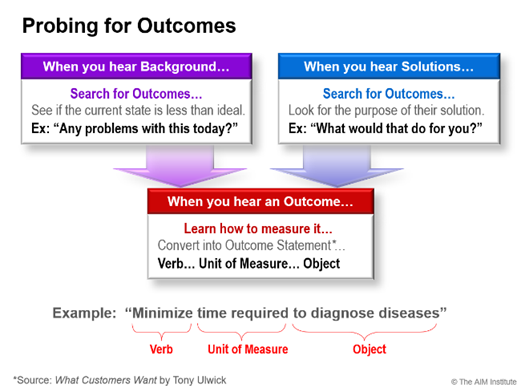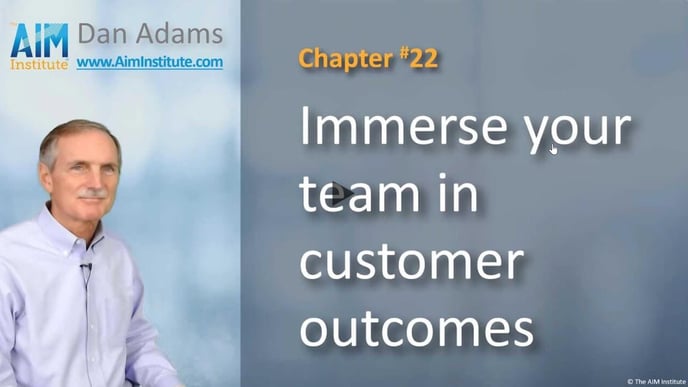With practice, you'll be able to mentally distinguish outcomes from solutions & background during your interviews.
When you are conducting a Discovery interview, everything the customer says can be categorized in one of three ways:
- Outcome: This is an end-result the customer would like to see. Example: “When opening a box, it shouldn’t require too much physical force.”
- Solution: Think of an outcome as “what” happens, and the solution as “how” it happens. Example: “We’d like to see a zipper to make it easy to open the box.”
- Background: This is “everything else”… descriptions, history, etc. Example: “We ship products in eight standard box sizes.”

In a Discovery interview, your primary goal is to uncover as many outcomes as possible and understand them as deeply as possible. So you want to develop your skills in quickly identifying outcomes… and separating them from solutions and background. You know you are dealing with an outcome if it is “OSUM”:
- Obvious value… You understand why customers would want this
- Stable over time… Customers will want this a long time (unlike many solutions)
- Unambiguous… All customers would have the same interpretation
- Measurable… You could imagine how to quantify satisfaction of customers
In some cases, the customer will volunteer an outcome when you ask, “What problems are you seeing?” or “What would your ideal world look like?” But in other cases, they’ll offer Background or Solutions… and your job is to see if you can uncover an Outcome in their thinking:
When you hear Background: See if their current state is less than ideal today: “Any problems with this today?” If the customer says, “We ship products in eight standard box sizes,” you could ask: “Any problems with that?” They might say “no” and you would move on. Or they might say this causes headaches with ordering boxes and storing them in the warehouse (two outcomes.)
When you hear Solutions: Look for the purpose of their solution. A great question to ask is, “What would that do for you?” Imagine the customer says, “We’d like to see a zipper on every box.” You’d ask, “What would that do for you?” and might learn they want elderly people to be able to open the box without tools or with less physical effort (two outcomes.)

You don't have to remember the above schematic: You'll find it on side 2 of your Discovery Interview Quick-Start Card, a downloadable BlueTool at www.blueprintingcenter.com > BlueTools > Conducting Discovery Interviews/Tours.
For more on this topic, see e-Learning Module 16: Capturing Customer Outcomes at www.blueprintingcenter.com > e-Learning.
Also check out this 2-minute video, part of the B2B Organic Growth video series by Dan Adams: Immerse your team in customer outcomes
Keywords: customer outcomes, outcome statement, minimize, maximize, solution, background, OSUM, obvious value, stable over time, unambiguous, measurable

